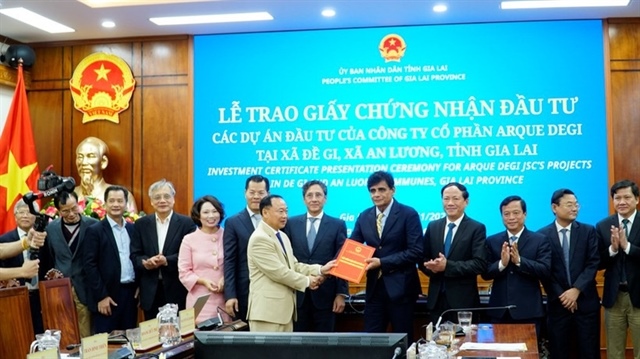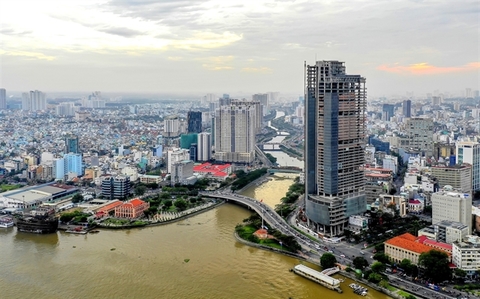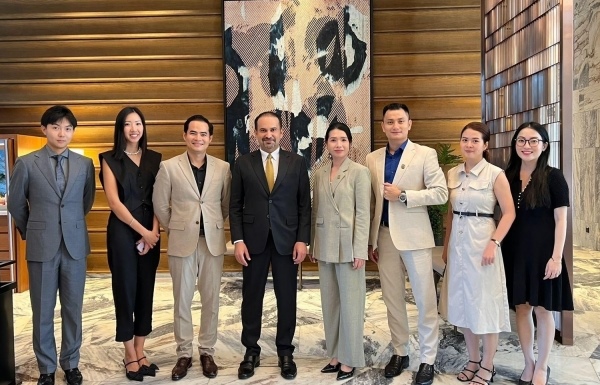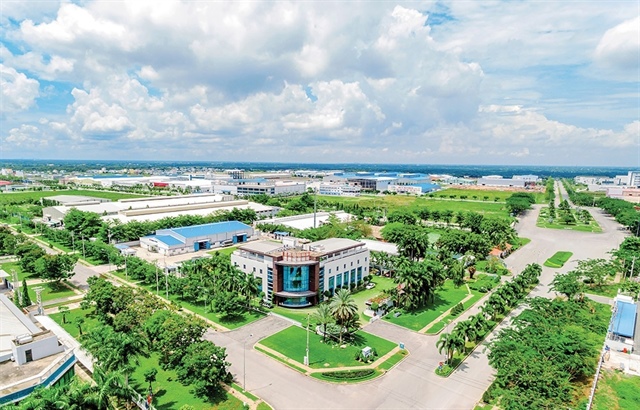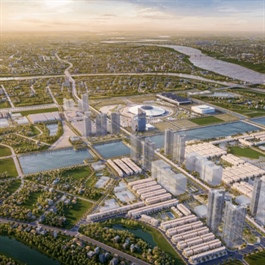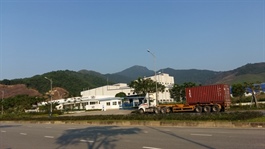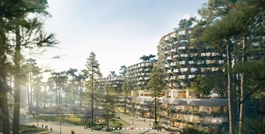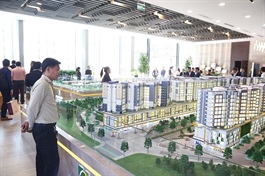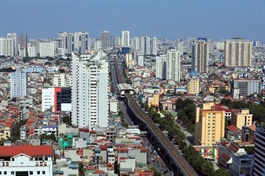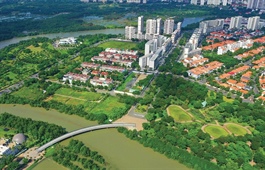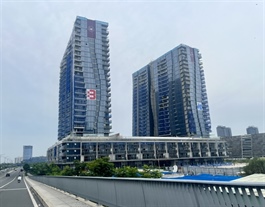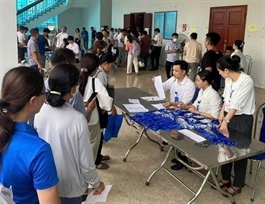Infrastructure creates solid ground for suburban areas
Infrastructure creates solid ground for suburban areas
The rapid growth of the infrastructure system in the outskirts of Hanoi and Ho Chi Minh City is creating a crucial launch pad for the suburban real estate market to develop.
From strategic highways to the Long Thanh International Airport and urban metro lines, transport infrastructure is proving an important lever to help economic growth and engage real estate investment.
The Thu Thiem New Urban Area in Ho Chi Minh City has emerged as an urban development centre with key infrastructure connection projects such as bridges and tunnels.
The area seeks more pedestrian bridges and the Thu Thiem 3 bridge connecting with District 4, and Thu Thiem 4 bridge connecting to District 7. In addition, metro line 2 linking the city centre to Cu Chi, a suburban district of Ho Chi Minh City, is also contributes to perfecting the regional transport infrastructure.
This area is recording strong growth in real estate value and has become an ideal destination for Grade A office buildings, commercial complexes and luxury apartments.
Huynh Thi Kim Thanh, investment advisory manager at Savills Vietnam, commented that major infrastructure constructions improve regional connectivity and add immense value to surrounding areas, opening up new real estate investment opportunities.
“Infrastructure integration doesn’t just create tangible value for real estate developments and enhances Vietnam’s appeal to global investors. The wave of infrastructure improvements creates immediate benefits while laying a foundation for long-term growth in Vietnam’s real estate market. Suburban and neighbouring provinces are poised to become future investment hotspots. The Long Thanh International Airport and urban metro lines will generate new opportunities for real estate and the broader economy,” Thanh said.
A series of large real estate developments are also taking advantage of infrastructure improvements to create competitive advantages.
For example, Vinhomes Long Beach Can Gio, located in the outskirts of Ho Chi Minh City, is considered one of the largest coastal real estate projects in Vietnam.
Expected to start construction this year, Vinhomes Long Beach Can Gio is becoming an attractive investment destination thanks to convenient traffic connections from Ho Chi Minh City.
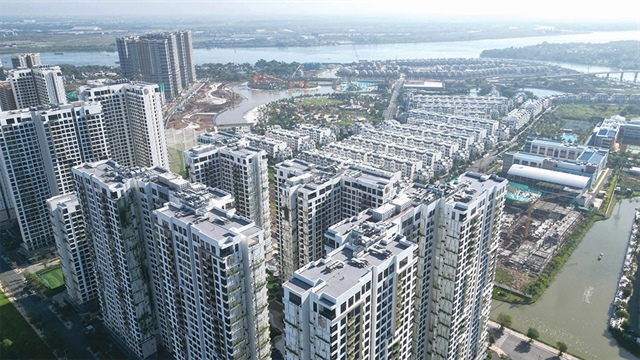
A raft of new developments are creating a period of progress for urban areas of Ho Chi Minh City Photo: Le Toan |
Localities benefiting
According to Ho Chi Minh City People’s Committee, in 2024-2030, more than 70 per cent of the total investment capital of more than $14.58 billion will be reserved to improve the transport system in the eastern region.
Specifically, ring road 3 started construction in June 2023 and is expected to open to traffic this year. The 3-storey An Phu intersection construction with an investment of more than $142 million will be inaugurated in late 2025.
These developments, combined with the Ben Thanh-Suoi Tien metro line which came into operation from the end of 2024 and the upcoming Long Thanh airport, will enhance the urban space, opening up a period of new development for the entire eastern urban area of Ho Chi Minh City.
Trang Le, head of Research and Consulting at JLL Vietnam, said big cities and provinces were dominated by the high-end housing segment and lacked commercial housing developments with prices suitable for the financial capabilities of most people.
“The city market is expected to receive new supply in the lower price segment next year, most of these will be located in areas outside the 10km from the city centre. Preferential sales policies to stimulate buyer demand are expected to continue in the near future,” Le said.
The eastern urban area of Ho Chi Minh City includes five dynamic urban areas: Thu Duc city, Di An city (Binh Duong province), Bien Hoa city (Dong Nai province) and two strongly developing districts of Long Thanh and Nhon Trach also in Dong Nai.
This area focuses on a modern transportation system with multi-way connections including the Hanoi Highway, National Highway 1, National Highway 51, and many others.
Furthermore, this is also an area that is booming with infrastructure developments investing billions of US dollars with the ambition of becoming a giant traffic hub. These include the Long Thanh International Airport, Bien Hoa-Vung Tau Expressway, and ring roads 3 and 4.
Binh Duong province has emerged as a potential bright spot with methodical planning, synchronous transport infrastructure, and attractive investment policies.
With an estimated investment capital of approximately $797 million, Sycamore, Singaporean CapitaLand’s first large-scale residential development in Vietnam, will offer more than 460 low-rise villas and about 3,300 apartments when it is fully completed in 2028.
Significant space
Meanwhile, Malaysian group Gamuda Land is developing Artisan Park in Binh Duong, a compound of 349 high-end commercial townhouse products. Costing more than $117 million, it is expected to be put into operation in phases starting from the end of 2025.
Dong Nai province has nearly 230 real estate projects that are under construction. Most of these are located in four localities with strong industrial development and a large population.
According to the Airports Corporation of Vietnam, when completed and put into operation, the Long Thanh airport will need almost 14,000 workers. The total number of residents in this area should be around 100,000 in the resettlement area and many residents on site. This creates significant demand for housing and living services, opening up the potential for developing various real estate types such as apartments, townhouses, villas, forming complex urban clusters.
In the north, Hung Yen and Haiphong have significant room for real estate development.
With the development of regional transport infrastructure planning, Hung Yen province continuously receives huge capital flows from real estate companies, and renowned giants in the real estate sector.
Among those, a housing development that has received a lot of attention is Vaquaris Van Giang belonging to Bao Hung Investment JSC, which is offering around 285 houses and villas late in 2025.
Nguyen Anh Tuan Khanh, vice chairman of the company, said that the Hung Yen real estate market was showing positive signs as the number of transactions increased, the market had passed the bottom, and many investors were ready to invest money in the new cycle.
“This is time for developers to jump into Hung Yen province where demand is increasing time by time,” Khanh said.
According to Savills Vietnam, 108,000 housing products are expected to enter the Hung Yen market by the end of 2025 to meet future demand.
Haiphong city has many positive signals for attracting investment, including potential advantages from seaports, developing industrial zones and clusters, and better conditions for capital and policy credit.
Tran Huy Bien, director of real estate research group An Phu Land, said that despite the influence of the global economy, the Haiphong market was seeing interest from many investors, with key projects starting construction, covering everything from transportation to social and high-end housing.
“The development of industrial parks and clusters is the current driving force for the real estate market in An Lao, Tien Lang, and Vinh Bao. In the future, after completing the coastal road connecting Haiphong, Thai Binh, and Nam Dinh, there will be more economic motivation for the region. The construction of the southern economic zone of Haiphong and Tien Lang airport will particularly help the real estate market to develop quickly and sustainably,” Bien said.


